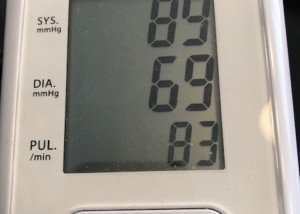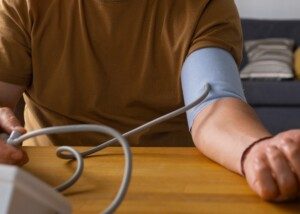
Your diastolic (the lower number) blood pressure just jumps around so much whenever you have a blood pressure reading.
One day it’s 80. Next day or even next hour it’s 68. A few days later it’s in the 70s. Meanwhile, the systolic (top number) value stays pretty much the same.
“That is normal,” says Susan L. Besser, MD, with Mercy Medical Center, Baltimore, and Diplomate American Board of Obesity Medicine and board certified by the American Board of Family Medicine.
“Actually, all measurable bodily functions vary throughout the day depending on what you are doing, your hormones and other bodily functions, circadian cycle,” continues Dr. Besser.
“So, this variability is expected. A comparison might be your home thermostat — even though it is set for one temperature, the temperature in your home will vary during the day and night, depending on many factors (like the amount of sunshine, outside air temp, the number of people in the house, whether the oven is on and so on).”
Do not obsess or fixate on the variability of the diastolic or systolic number of your blood pressure readings.
What’s important is that both numbers are within the range for normal blood pressure.
What Is Normal Blood Pressure?
In late 2017 new guidelines were established by the American College of Cardiology and the American Heart Association.
Normal: Less than 120/80 mm Hg
Elevated: Systolic between 120-129; diastolic less than 80
Stage 1 hypertension: Systolic between 130-139 or diastolic between 80-89
Stage 2 hypertension: Systolic at least 140 or diastolic at least 90 mm Hg
For best results with a home blood pressure monitor, take the reading after you’ve been sitting calmly for at least 10 minutes.
A reading at a doctor’s office may reflect the so-called white coat syndrome, in which BP is elevated due to anxiety.
Increasing your consumption of raw vegetables and fruits, and reducing your intake of processed foods, will lower your baseline blood pressure.
So will structured exercise and quitting smoking.
 Dr. Besser provides comprehensive family care, treating common and acute primary conditions like diabetes and hypertension. Her ongoing approach allows her the opportunity to provide accurate and critical diagnoses of more complex conditions and disorders.
Dr. Besser provides comprehensive family care, treating common and acute primary conditions like diabetes and hypertension. Her ongoing approach allows her the opportunity to provide accurate and critical diagnoses of more complex conditions and disorders.
 Lorra Garrick has been covering medical, fitness and cybersecurity topics for many years, having written thousands of articles for print magazines and websites, including as a ghostwriter. She’s also a former ACE-certified personal trainer.
Lorra Garrick has been covering medical, fitness and cybersecurity topics for many years, having written thousands of articles for print magazines and websites, including as a ghostwriter. She’s also a former ACE-certified personal trainer.
.








































